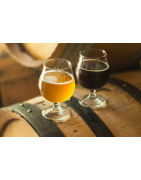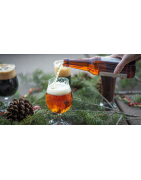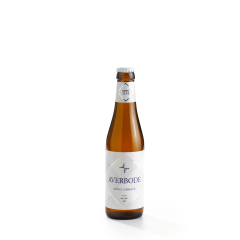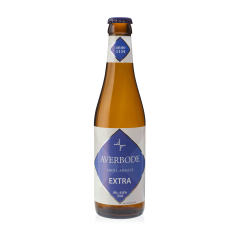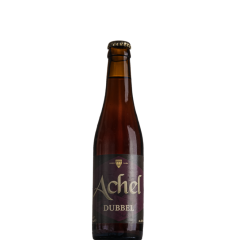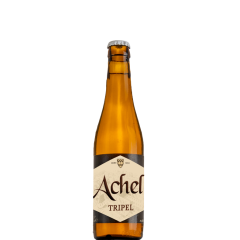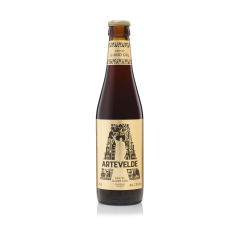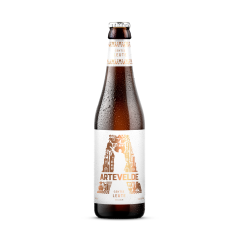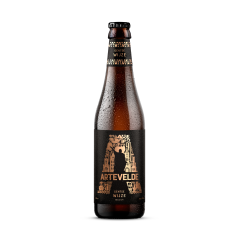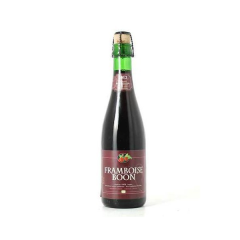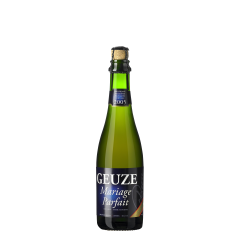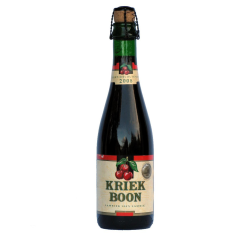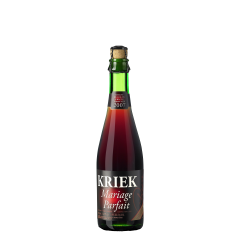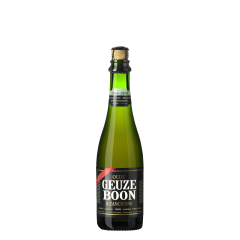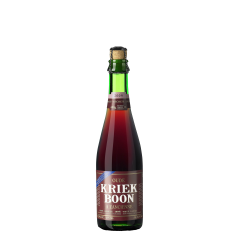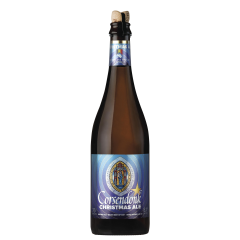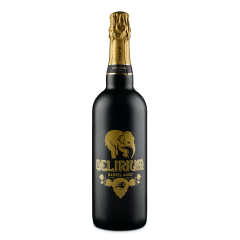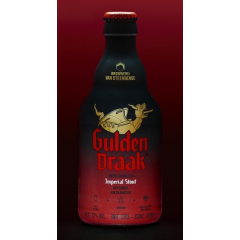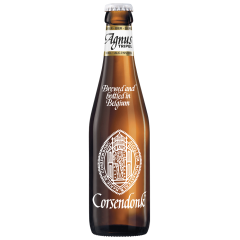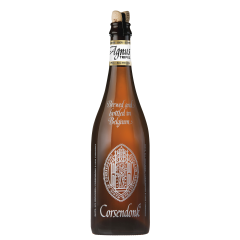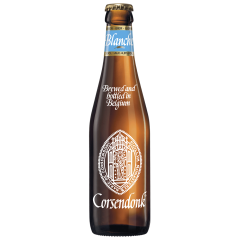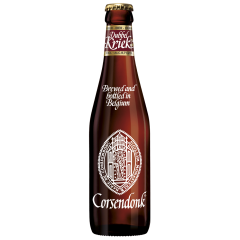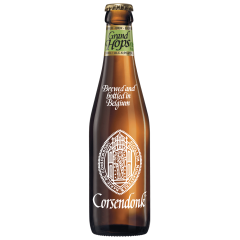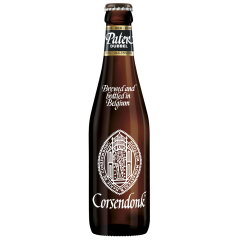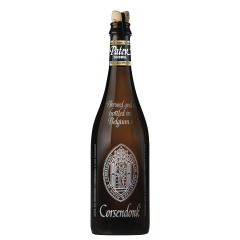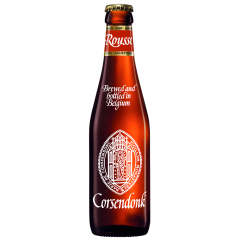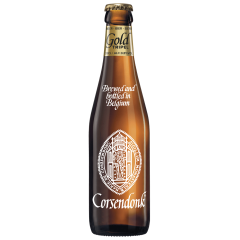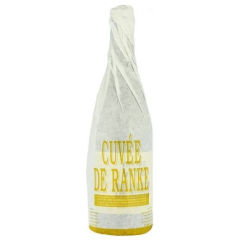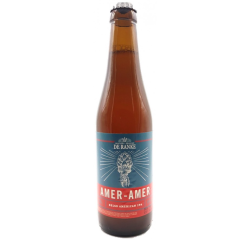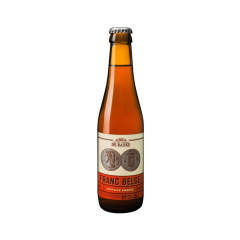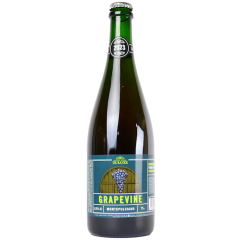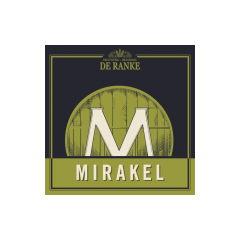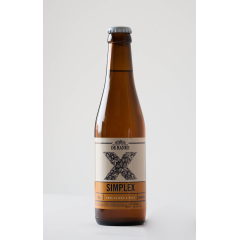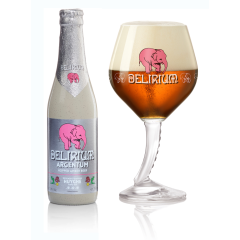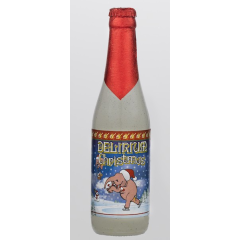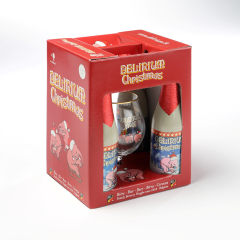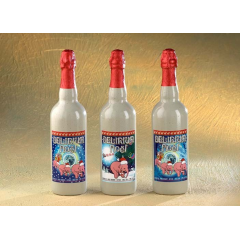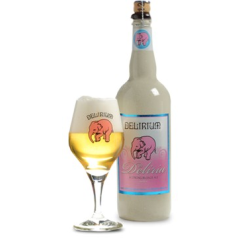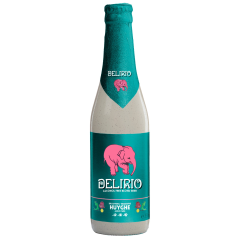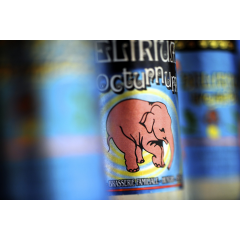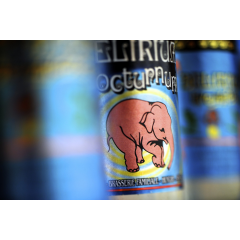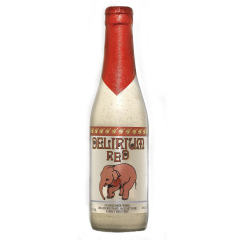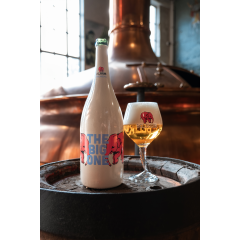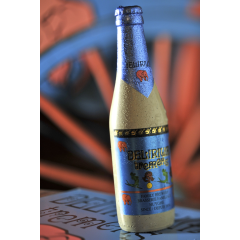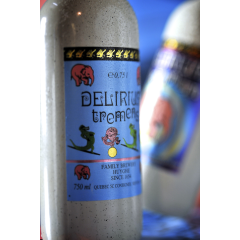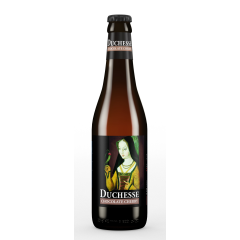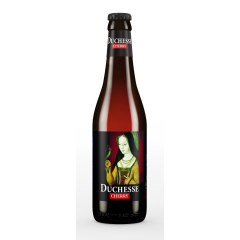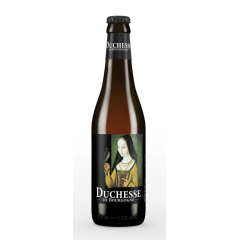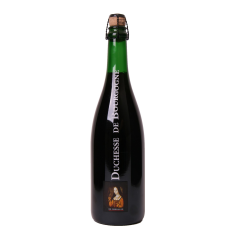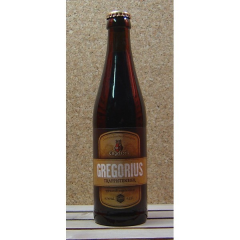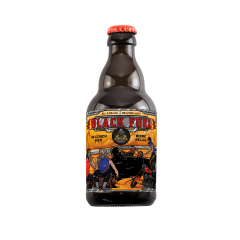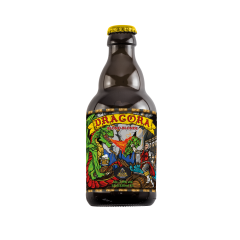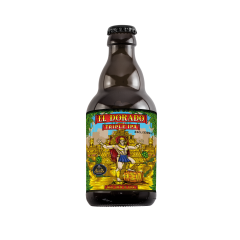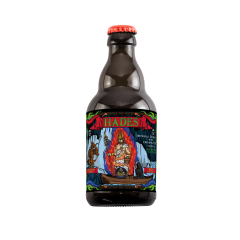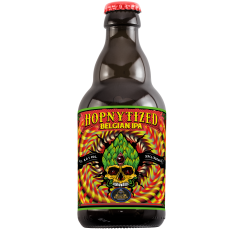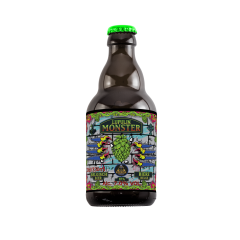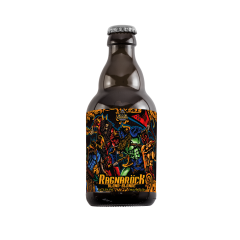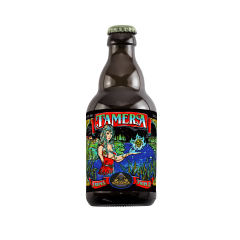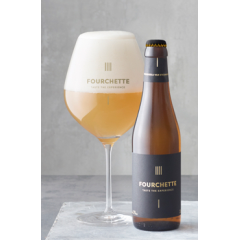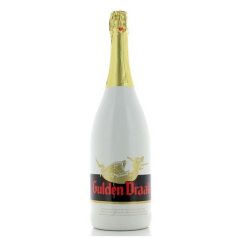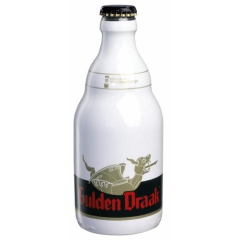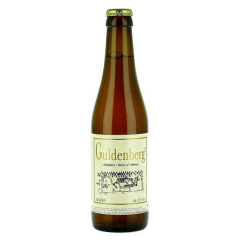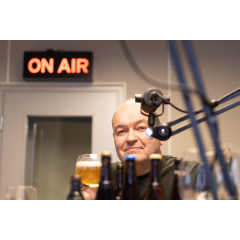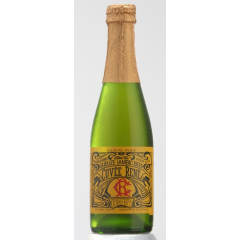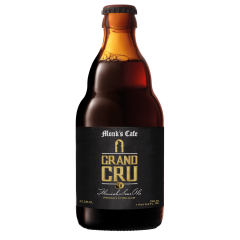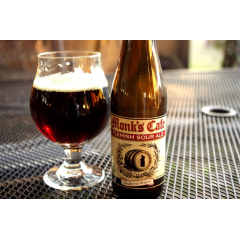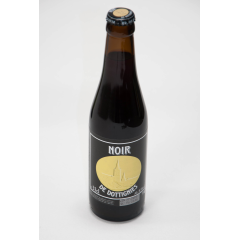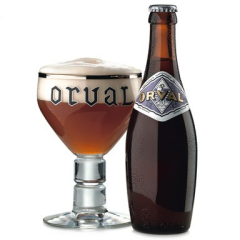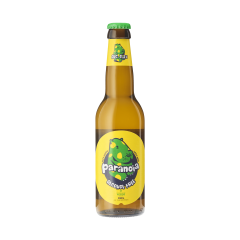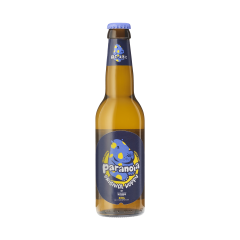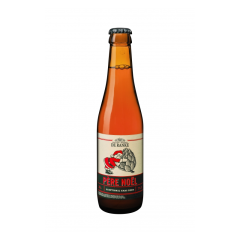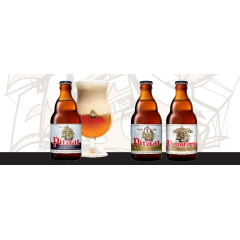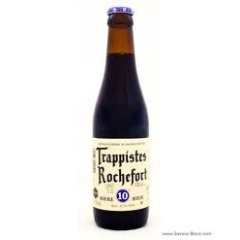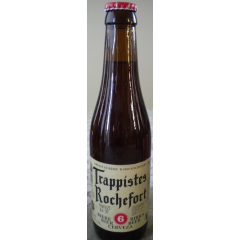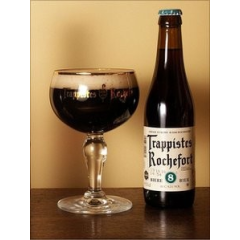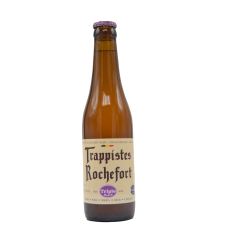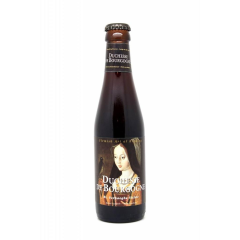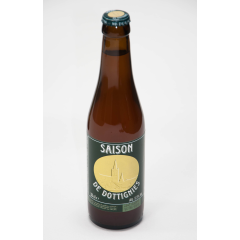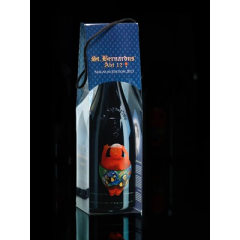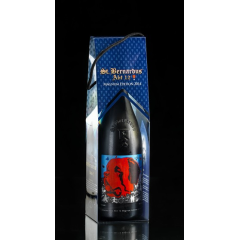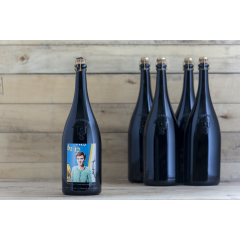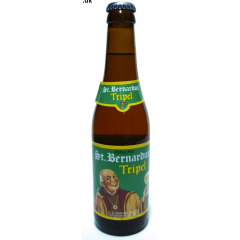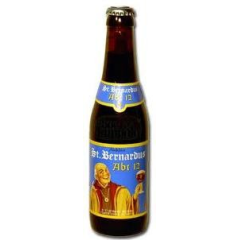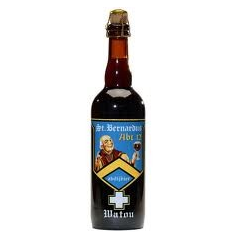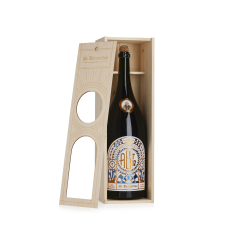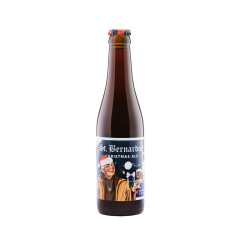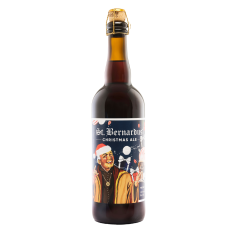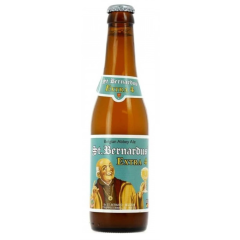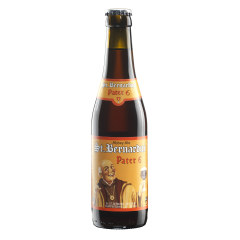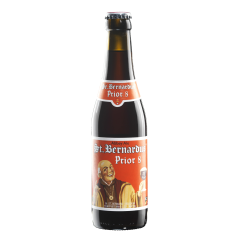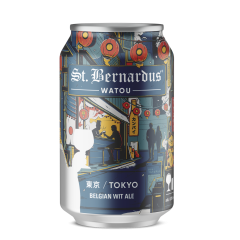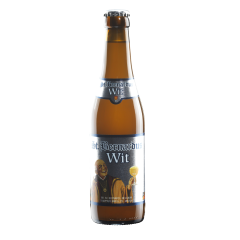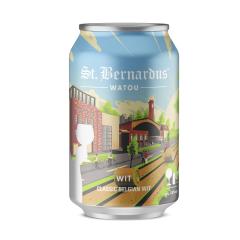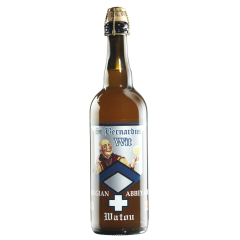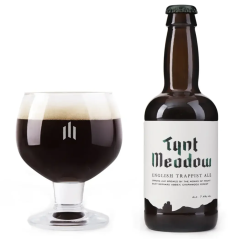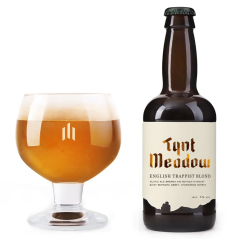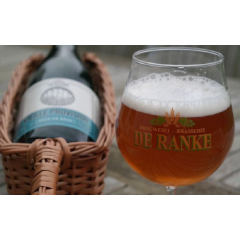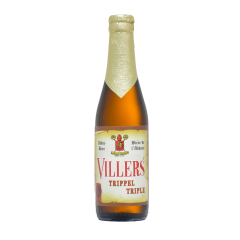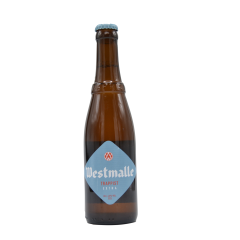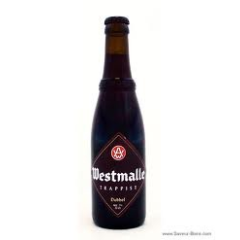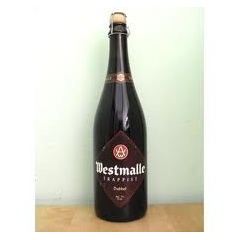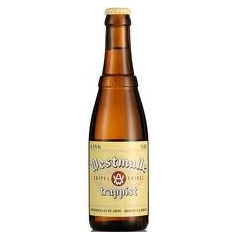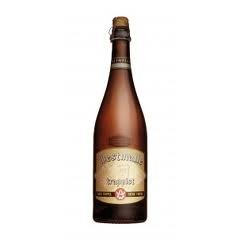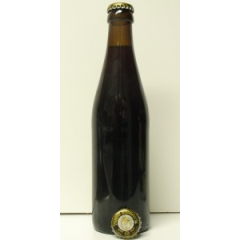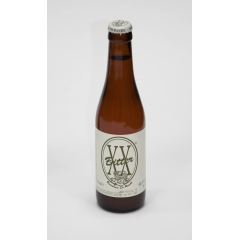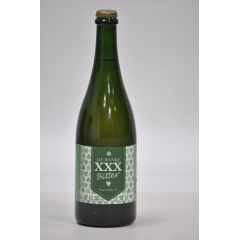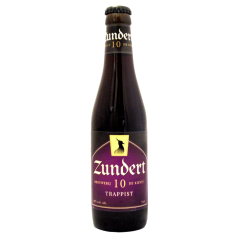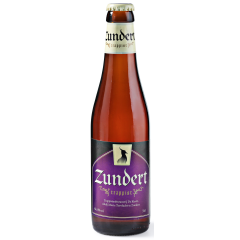Beers
Beer is the world's most widely consumed and probably oldest of alcoholic beverages; it is the third most popular drink overall, after water and tea. Beer in Belgium varies from the popular pale lager to lambic beer and Flemish red. Belgian beer-brewing's origins go back to the Middle Ages. There are approximately 125 breweries in the country, ranging from international giants to microbreweries. In Europe, only Germany, France and the United Kingdom are home to more breweries.
Belgian breweries produce about 800 standard beers. When special one-off beers are included, the total number of Belgian beers is approximately 8,700

Subcategories
-
Amber ales (Ambrée and...
These are beers similar to the traditional pale ales of England, although somewhat less bitterly hopped. A notable example is the 5% abv De Koninck brand, with its distinctive spherical glasses (called 'bollekes'). It is popular in its native city of Antwerp. Another is Palm Speciale. Some, such as Vieux Temps, were based on British styles to please troops stationed in Belgium during World War I. Others were introduced by the UK-born brewer George Maw Johnson in the late 19th century. Wallonian amber or ambrée ale, such a La Gauloise Ambrée, is considered to be somewhat distinct by some beer writers, and to be influenced the French style of ambrée.
-
Dubbel
The dubbel (also double) is a Belgian Trappist beer naming convention.
The origin of the dubbel was a beer brewed in the Trappist Abbey of Westmalle in 1856.
The abbey had, since 10 December 1836, brewed a witbier that was quite sweet and light in alcohol for consumption by the paters. The new beer, however, was a strong version of a brown beer. In 1926, the formulation was changed and it became even stronger. The first written record of its sale by the abbey was on 1 June 1861. Following World War Two, abbey beers became popular in Belgium and the name "dubbel" was used by several breweries for commercial purposes.
Westmalle Dubbel was imitated by other breweries, Trappist and secular, Belgian and worldwide, leading to the emergence of a style. Dubbels are now understood to be a fairly strong (6%-8% ABV) brown ale, with understated bitterness, fairly heavy body, and a pronounced fruitiness and cereal character. Chimay Red/Premiere, Koningshoeven/La Trappe Dubbel and Achel 8 Bruin are examples from Trappist breweries. Affligem and Grimbergen are Belgain abbey breweries that produce dubbels.
-
Flemish red/brown sour...
Flanders red ale is a style of sour ale usually brewed in Belgium.
Although sharing a common ancestor with English porters of the 17th century, the Flanders red ale has evolved along a different track: the beer is often fermented with organisms other than Saccharomyces cerevisiae, especially Lactobacillus, which produces a sour character attributable to lactic acid.
Long periods of aging are employed, a year or more, often in oaken barrels, to impart an acetic acid character to the beer. Special red malt is used to give the beer its unique color and often the matured beer is blended with a younger batch before bottling to balance and round the character. Flanders reds have a strong fruit flavor similar to the aroma, but more intense. Plum, prune, raisin and black cherry are the most common flavors, followed by orange and some spiciness.
All Flanders red ales have an obvious sour or acidic taste, but this characteristic can range from moderate to strong. There is no hop bitterness, but tannins are common.
Consequently, Flanders red ales are often described as the most "wine-like" of all beers.
-
Blond ale
These beers are a light variation on pale ale, often made with pilsener malt.
Some beer writers regard blonde and golden ales as distinct styles, while others do not.
Duvel is the archetypal Belgian blonde ale, and one of the most popular bottled beers in the country as well as being well-known internationally. It's name means "Devil" and some other blonde beers follow the theme—Satan, Lucifer, Brigand, Piraat and so on.
The style is popular with Wallonian brewers, the slightly hazy Moinette being the best-known example.
Delirium Tremens can be considered a spiced version of Berlgian Pale Ale.
-
Hop-accentuated beers
A few Belgian beers are pale and assertively hopped, like an India Pale Ale. De Ranke's "XX Bitter" has a British-style name.
Poperings Hommelbier is another example, hailing from Belgium's hop-growing district.
-
Abbey and abbey-style...
Abbey beers (Bières d'Abbaye or Abdijbier) are either:
- brewed by a commercial brewer with license from an existing abbey; or
- branded with the name of a defunct or fictitious abbey by a commercial brewer; or
- given a vaguely monastic branding, without mentioning a specific monastery, by a commercial brewer.
Abbey beers include dubbels and tripels, the most recognizable and distinctive Trappist types.
Some beer writers warn against assuming that closeness of connection with a real monastery is indicative of quality of product.
Various Abbey beers include Inbev's Leffe, Affligem, Grimbergen, Maredsous, St. Bernardus, Tripel Karmeliet, Saint-Feuillien, Floreffe, and Val-Dieu.
If the 1st condition is fulfilled, then it's real and certified Abbey-beer thus you may find an appropriate logo (a Gothic window shape) from the label. Otherwise, the beer is just an abbey-style beer.
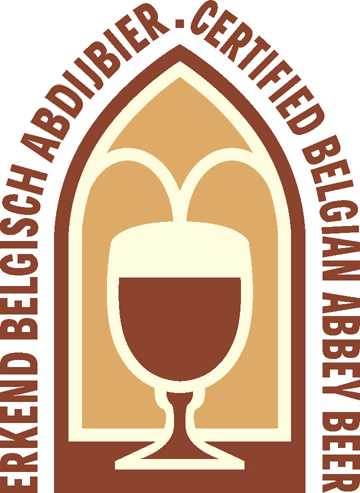
-
Lambics
Lambic is a wheat beer brewed in the Pajottenland region of Belgium (southwest of Brussels) by spontaneous fermentation.
Lambic's fermentation, however, is produced by exposure to the wild yeasts and bacteria that are said to be native to the Senne valley, in which Brussels lies.
The beer then undergoes a long aging period ranging from three to six months (considered "young") to two or three years for mature. It is this unusual process which gives the beer its distinctive flavor: dry, vinous, and cidery, with a slightly sour aftertaste.
Lambic can be broken into three subclasses: Lambiek, Gueuze, Fruit Lambic, and Faro.
The Lambiek is only available locally, from tap. It's unsweetened raw lambifc from the fermentation barrels. In its most natural form, Lambic is a draught beer which is rarely bottled, and thus only available in its area of production and a few cafes in and around Brussels.
The second of these, gueuze, blends both old and young mixtures to stimulate a second fermentation. Many are laid down like fine wines to age for several more years. Gueuze, also known informally as Brussels Champagne, is a sparkling beer produced by combining a young Lambic with more mature vintages.
Fruit lambics are made by adding fruit or fruit concentrate to Lambic beer. The most common type is Kriek (made with cherries). Other fruits used are raspberry (Framboise), peach and blackcurrant. Kriek and Framboos blend the fruit to trigger the second fermentation.
The last of the Lambic brews, Faro, adds sugar or caramel to prompt the fermentation.
Major brands include Lindemans, Boon, Mort Subite, Belle-Vue, Cantillon and Saint-Louis. Some more mainstream brewers like Mort Subite and Saint-Louis do not subscribe to the orthodox rules of lambic production, adding extra sugars to sweeten their beers.
-
Wheat beer
This type of beer, commonly called witbier in Dutch, biėre blanche in French and wheat beer in English, originated in the Flemish part of Belgium in the Middle Ages.
Traditionally, it is made with a mixture of wheat and barley. Before hops became widely available in Europe, beers were flavored with a mixture of herbs called gruit. In the later years of the Middle Ages, hops were added to the gruit. That mixture continues today in most Belgian/Dutch white beers.
The production of this type of beer in Belgium had nearly ended by the late 1950s. In the town of Hoegaarden, the last witbier brewery, Tomsin, closed its doors in 1955. However, ten years later, a young farmer, by the name of Pierre Celis, in the same village decided to try reviving the beer.
In 1966, Celis began brewing a wit beer in his farm house. Ultimately, his beer took the name of the village and became very successful and famous. Some notable current examples are Celis White, St. Bernardus Wit, Blanche de Namur and Watou's Wit. Their alcohol strength is about 5-6 percent ABV, and these beers can be quite refreshing, especially during the warm summer months.
The herb mixture traditionally includes coriander and (bitter-)orange peel, among with other herbs. White beers also have a moderate light grain sweetness from the wheat used. In recent times, brewers have been making fruit flavored wheat beers.
-
Fruit beer
A generic form of flavored beer, some breweries actually use real fruit or veggies, though most use an extract, syrup or processed flavor to give the effect of a particular fruit or vegetable.
Usually ales, but with not much ale character to them and commonly unbalanced.
Malt flavor is typically hidden with a low hop bitterness to allow the fruit or vegetable to dominate. Special type of fruit beers is Fruit lambics, which are usually bottled with secondary fermentation.
Although fruit lambics are among the most famous Belgian fruit beers, the use of names such as kriek, framboise or frambozen, cassis, etc. does not necessarily imply that the beer is made from lambic.
-
Quadrupel
Inspired by the Trappist brewers of Belgium, a Quadrupel is a Belgian style ale of great strength with bolder flavor compared to its Dubbel and Tripel sister styles.
Typically a dark creation that ranges within the deep red, brown and garnet hues.
Full bodied with a rich malty palate.
Phenols are usually at a moderate level. Sweet with a low bitterness yet a well perceived alcohol.
-
Saison
Saison (French, "season") is the name originally given to refreshing, low-alcohol pale ales brewed seasonally in farmhouses in Wallonia, the French-speaking region of Belgium, to refresh farm workers during harvest season.
Modern-day saisons are also brewed in other countries, particularly USA, and are generally bottle conditioned, with an average range of 5 to 8% abv, though saisons at the more traditional 3.5% strength can still be found.
Although saison has been described as an endangered style, there has been a rise in interest in this style in recent years, with Saison Dupont being named "the Best Beer in the World" by the magazine Men's Journal in July 2005. Historically, saisons did not share identifiable characteristics to pin them down as a style, but rather were a group of refreshing summer ales. Each farm brewer would make his own distinctive version.
-
Trappists
As of January 2024, twelve Trappist breweries are active and members of ITA— five in Belgium, two in the Netherlands, and one each in Austria, Italy, England, France and Spain.
This association has a legal standing, and its logo gives the consumer some information and guarantees about the product. Trappist breweries are constantly monitored to assure the irreproachable quality of their beers.
In addition to being a Trappist brewery, the monastic communities that are members of the ITA can apply for the Authentic Trappist Product (ATP) label. The following criteria are used for ATP label:
- All products must be made within the immediate surroundings of the abbey;
- Production must be carried out under the supervision of the monks or nuns;
- Profits should be intended for the needs of the monastic community, for purposes of solidarity within the Trappist Order, or for development projects and charitable works.
The current Trappist producers are:
International Trappist Association recognized breweries Brewery Location Opened Annual production (2004) Brouwerij der Trappisten van Westmalle  Belgium
Belgium1836 120,000 hL (100,000 US bbl) Brouwerij Westvleteren/St Sixtus  Belgium
Belgium1838 4,750 hL (4,050 US bbl) Bières de Chimay  Belgium
Belgium1863 123,000 hL (105,000 US bbl) Brouwerij de Koningshoeven (La Trappe)  Netherlands
Netherlands1884 145,000 hL (124,000 US bbl) Brasserie de Rochefort  Belgium
Belgium1899 18,000 hL (15,000 US bbl) Brasserie d'Orval  Belgium
Belgium1931 71,000 hL (61,000 US bbl) Stift Engelszell  Austria
Austria2012 2,000 hL (1,700 US bbl) Brouwerij Abdij Maria Toevlucht (Zundert)  Netherlands
Netherlands2013 5,000 hL (4,300 US bbl) Tre Fontane Abbey  Italy
Italy2015 2,000 hL (1,700 US bbl) Mount St Bernard Abbey (Tynt Meadow)  UK
UK2018 2,000 hL (1,700 US bbl) Mont des Cats  France
France1826 ? Cerveza Cardeña Trappist  Spain
Spain2016 ? Achel in Belgium handed all their brewery over to a private company in 2023, Spencer (USA) gave up brewing in early 2020 as it was economically not sustainable.
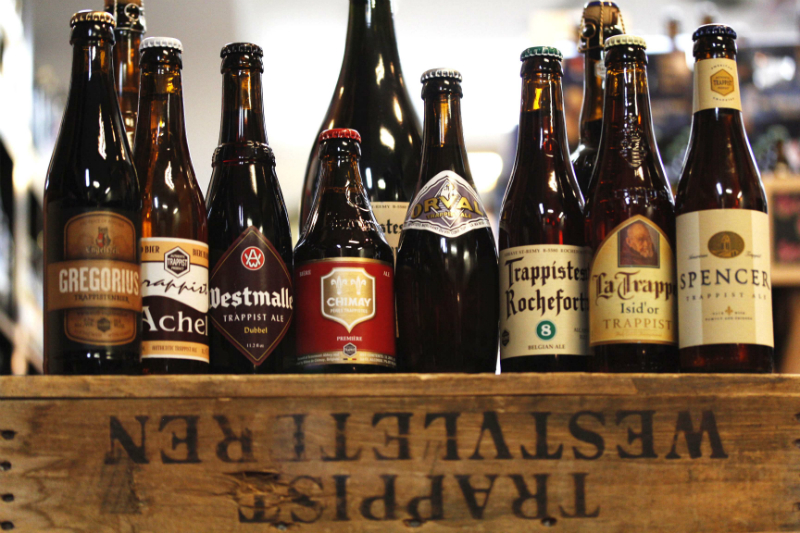
-
Tripel
Tripel is a term used originally by brewers in the Low Countries to describe a strong pale ale, and became associated with Westmalle Tripel.
The style of Westmalle's Tripel and the name was widely copied by the breweries of Belgium, then the term spread to the USA and other countries.
The name "Tripel" actually stems from part of the brewing process, in which brewers use up to three times the amount of malt than a standard Trappist "Simple." Traditionally, Tripels are bright yellow to gold in color, which is a shade or two darker than the average Pilsener. Head should be big, dense and creamy. Aroma and flavor runs along complex, spicy phenolic, powdery yeast, fruity/estery with a sweet finish.
Sweetness comes from both the pale malts and the higher alcohol. Bitterness is up there for a beer with such a light body for its strength, but at times is barely perceived amongst the even balance of malts and hops. The lighter body comes from the use of Belgian candy sugar (up to 25% sucrose), which not only lightens the body, but also adds complex alcoholic aromas and flavors. Small amounts of spices are sometimes added as well.
Tripels are actually notoriously alcoholic, yet the best crafted ones hide this character quite evil-like and deceivingly, making them sipping beers.
-
Dark Ale
Belgian Darks offer a massive range of characters.
Colors play within the amber to light brown to deep garnet hues, with thick, rocky heads of great retention. Aromas can be anywhere from traces of yeast, spiced, malty, floral and even slightly intoxicating. Flavors from dry and spiced, to sweet and malty. Most have a low level of bitterness.
Average alcohol by volume (abv) range: 4.0-7.0%
-
Stout/Porter
Stout is a dark beer made using roasted malt or roasted barley, hops, water and yeast.
Stouts were traditionally the generic term for the strongest or stoutest porters, typically 7% or 8%, produced by a brewery.
In this sense a stout is not necessarily dark in colour because there are also blonde stouts.
There are a number of variations including Baltic porter, dry stout and imperial stout.
The name porter was first used in 1721 to describe a dark brown beer popular with street and river porters of London that had been made with roasted malts. This same beer later also became known as stout though the word stout had been used as early as 1677.
-
Alcohol-free beers
Alcohol-free beers
-
Barrel Aged
-
Christmas beers
Most of breweries brew specialty christmas beers for Christmas. a number of spices and varieties are released


